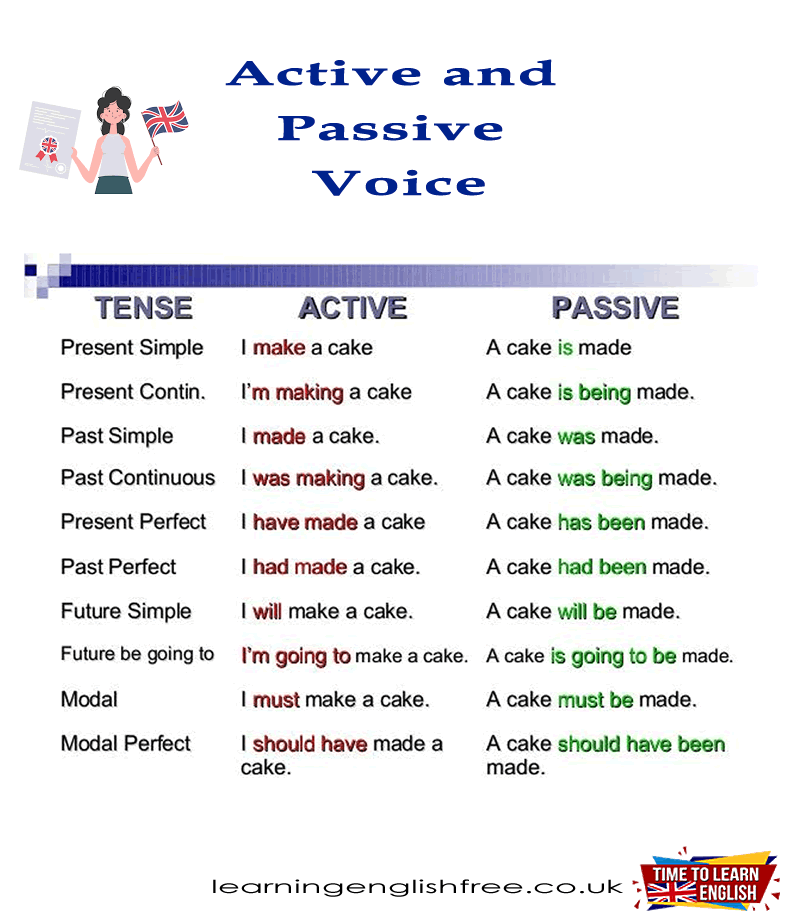Introduction to Active and Passive Voice
Welcome to our comprehensive lesson on Active and Passive Voice in English. This lesson is designed to help you understand how to construct sentences in both active and passive forms. Understanding these concepts is crucial for effective communication and writing in English.
Learning Objectives
- To comprehend the difference between active and passive voice.
- To learn how to form passive sentences from active ones and vice versa.
- To apply active and passive voice appropriately in various tenses.
Part 1: Present and Past Tenses
Active Voice vs. Passive Voice Table
| Tense | Active | Passive |
|---|---|---|
| Present Simple | I make a cake. | A cake is made. |
| Present Continuous | I'm making a cake. | A cake is being made. |
| Past Simple | I made a cake. | A cake was made. |
| Past Continuous | I was making a cake. | A cake was being made. |
| Present Perfect | I have made a cake. | A cake has been made. |
| Past Perfect | I had made a cake. | A cake had been made. |
Part 2: Future Tenses and Modal Verbs
| Tense | Active | Passive |
|---|---|---|
| Future Simple | I will make a cake. | A cake will be made. |
| Future 'be going to' | I'm going to make a cake. | A cake is going to be made. |
| Modal | I must make a cake. | A cake must be made. |
| Modal Perfect | I should have made a cake. | A cake should have been made. |

Summary and Takeaways
- Understanding the Voices: This lesson provided insight into the active and passive voice structures in various tenses.
- Practical Application: The ability to switch between active and passive forms enhances versatility in both spoken and written English.
- Recognising Context: Understanding when to use active or passive voice depends on the focus of your sentence.
- Continuous Practice: To master these forms, practice regularly. Visit our Facebook page for more resources.
- Real-life Usage: Active and passive voices are used daily, from writing reports to having conversations. Understanding both forms is key to effective communication.
